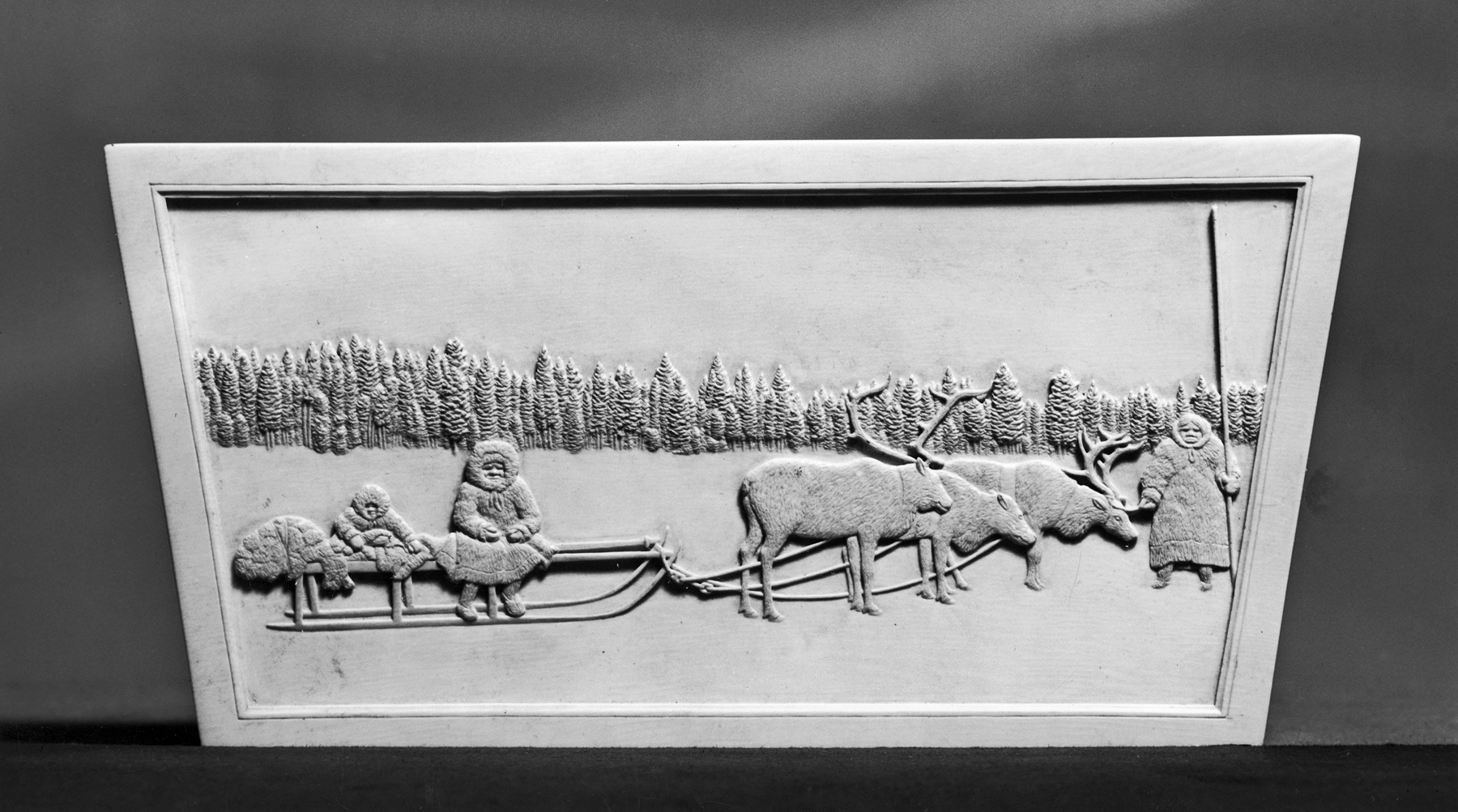Paperweight
(18th and 19th Centuries )
Mammoth tusks preserved in the Arctic permafrost provided a ready supply of ivory. This paperweight shows an Inuit or Yupik family and their reindeer.
Provenance
Provenance (from the French provenir, 'to come from/forth') is the chronology of the ownership, custody, or location of a historical object. Learn more about provenance at the Walters.
Tiffany & Co., New York; purchased by Henry Walters, Baltimore, before 1916[1]; by bequest to the Walters Art Museum, 1931.
[1] Illustrated and credited to the "Collection of Henry Walters, Esq." in George Frederick Kunz, Ivory and the Elephant in Art, in Archaeology, and in Science (Garden City, NY: Doubleday, Page and Company, 1916), between pages 126 and 127.
Conservation
| Date | Description | Narrative |
|---|---|---|
| 3/2/1959 | Treatment | cleaned |
| 1/23/1988 | Treatment | cleaned |
| 1/23/1988 | Examination | examined for condition |
Geographies
Russia, Tobolsk (Place of Origin)
Measurements
H: 1 1/8 × W: 7 5/16 × D: 3 9/16 in. (2.8 × 18.5 × 9.1 cm)
Credit Line
Acquired by Henry Walters, before 1916
Location in Museum
Not on view
Accession Number
In libraries, galleries, museums, and archives, an accession number is a unique identifier assigned to each object in the collection.
In libraries, galleries, museums, and archives, an accession number is a unique identifier assigned to each object in the collection.
71.400


